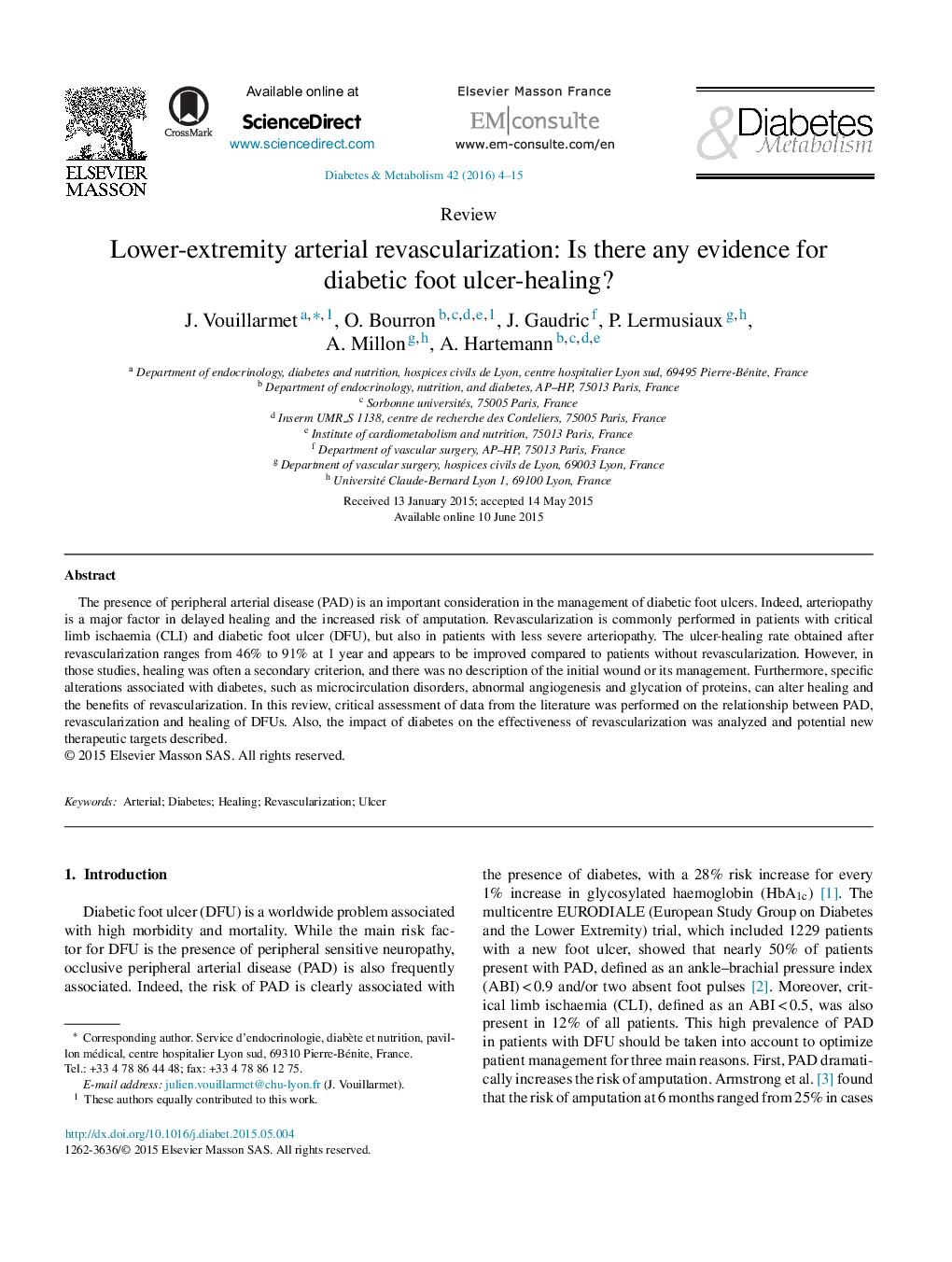| کد مقاله | کد نشریه | سال انتشار | مقاله انگلیسی | نسخه تمام متن |
|---|---|---|---|---|
| 3259094 | 1207568 | 2016 | 12 صفحه PDF | دانلود رایگان |
The presence of peripheral arterial disease (PAD) is an important consideration in the management of diabetic foot ulcers. Indeed, arteriopathy is a major factor in delayed healing and the increased risk of amputation. Revascularization is commonly performed in patients with critical limb ischaemia (CLI) and diabetic foot ulcer (DFU), but also in patients with less severe arteriopathy. The ulcer-healing rate obtained after revascularization ranges from 46% to 91% at 1 year and appears to be improved compared to patients without revascularization. However, in those studies, healing was often a secondary criterion, and there was no description of the initial wound or its management. Furthermore, specific alterations associated with diabetes, such as microcirculation disorders, abnormal angiogenesis and glycation of proteins, can alter healing and the benefits of revascularization. In this review, critical assessment of data from the literature was performed on the relationship between PAD, revascularization and healing of DFUs. Also, the impact of diabetes on the effectiveness of revascularization was analyzed and potential new therapeutic targets described.
Journal: Diabetes & Metabolism - Volume 42, Issue 1, February 2016, Pages 4–15
